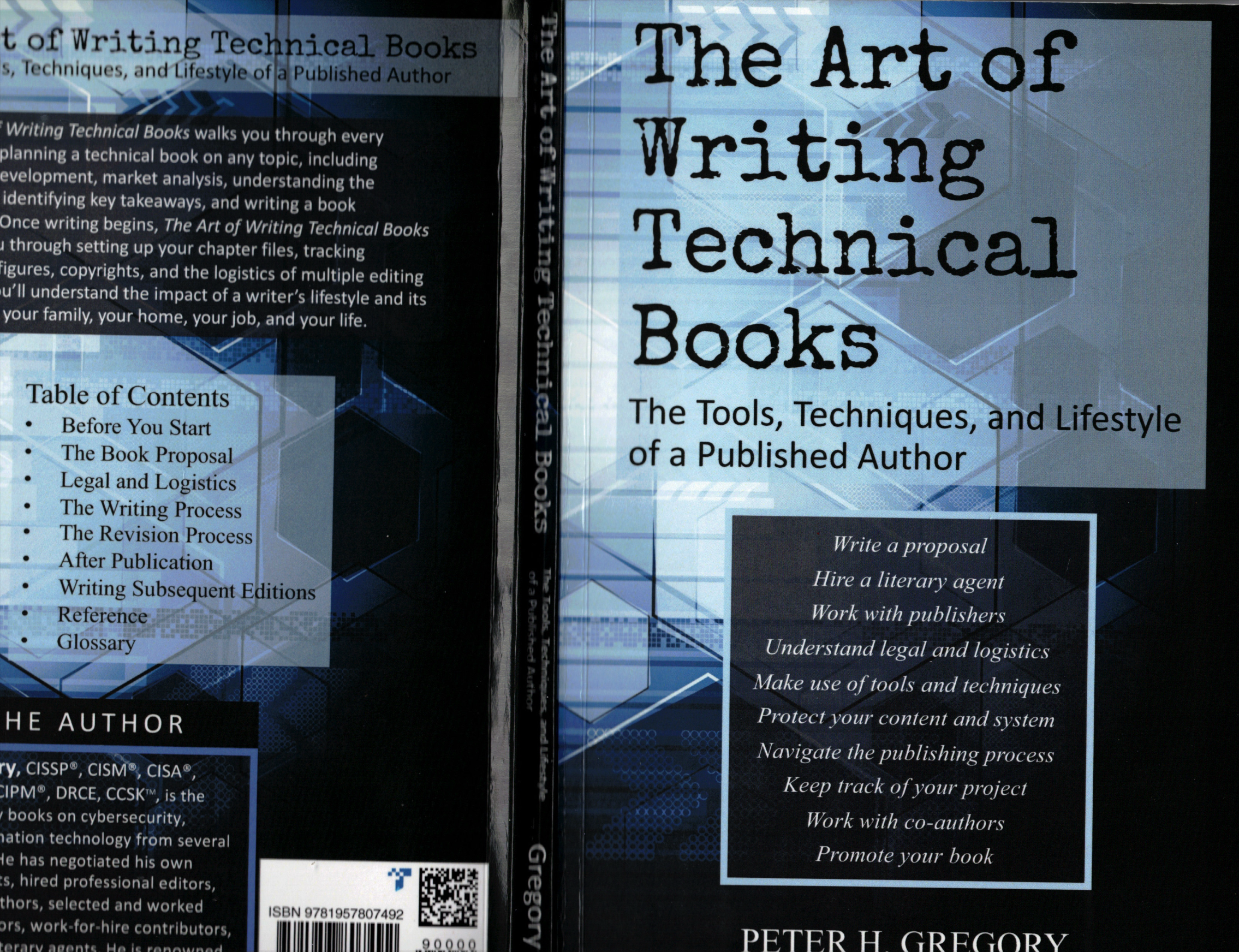4 minutes
(Read 109) The Art of Writing Technical Books

Author: Peter H. Gregory
Release year: 2022
Publisher: Waterside Productions
My review
After writing over 50 technical books, Peter H. Gregory probably got tired of always answering the same questions about how to become an author. He decided to answer these questions once and for all by writing today’s book, The Art of Writing Technical Books.
If you’re not interested in becoming a published author, this book might be of little interest to you. There is no shame in that. As far as I’m concerned, this book was a godsend. I’m convinced it will help me a lot in my quest to get Overcoming Learning Anxiety published.
The book thoroughly covers the entire process of:
- planning to write a book
- writing a book
- proposing a book
- marketing a book
- revising a book
I’m amazed that all of these topics get covered in detail in less than 200 pages. I haven’t read Gregory’s other books, but to me this one seems like a crowning achievement. There are many ideas that I captured in my handwritten notes that, although they don’t make for great star quotes, will surely be useful in the future. In fact, I wish I had read this book sooner, as I’m sure it would have streamlined the process of writing my own book.
What did I learn?
- (p. 17) If you’re having trouble figuring out what to say and how to say it, pretend you are in a personal setting and say it aloud. Listen to your words, and then write them down.
- Wikimedia Commons is a great source of public domain images.
- (p. 97) Remedies for the writer’s block (you may need to use more than one
to get back on track):
- Move to a different section or chapter
- Switch to dictation if you’re typing, or to typing if you’re dictating
- Take a break. Take a walk outside, look around.
- Start typing, focusing on a single word at a time. Don’t think about the big picture.
Félix rating:
👍👍
👍👍
⭐ Star Quotes
Introduction
Chapter 1: Before You Start
- (p. 10) Time spent writing is time not spent in relationships.
- (p. 13) Self-actualization is an insufficient reason to write a book.
- (p. 14) Saying that “everyone” is a potential reader is a cop-out.
- (p. 15) No tech book author should begin writing without first creating a fully developed table of content.
- (p. 15) Before you develop your TOC, you should have identified your book’s purpose, audience, and takeaways.
Chapter 2: The Book Proposal
- (p. 30) Before a publisher agrees to publish your tech book, you’ll need to provide information about current trends and products that support your book’s idea.
- (p. 30) Your proposal should include a list of three to six recent competing titles that are most similar to your proposed book.
- (p. 31) Reviews [of other books] can help you ensure that you don’t make the same mistakes made by other authors of similar titles.
- (p. 36) It is not wise to insist that you will deliver your manuscript using a word processor that the publisher does not support natively.
- (p. 38) When you’re just starting out in writing, you must play by the publisher’s rules.
Chapter 3: Legal and Logistics
- (p. 45) Have a document or worksheet open where you record all books, websites and other sources you consult during your research, whether you use information from them or not.
- (p. 49) In the public domain, attributions are still necessary.
- (p. 59) No one works for free. Your book is the product of considerable work by skilled professionals, and the result is quality work that is far superior to anything you could have done on your own.
Chapter 4: The Writing Process
- (p. 74) A time-proven hierarchy for storing files for each book project
- (p. 81) Creating a Writing Project Tracker in Excel
Chapter 5: The Revision Process
- (p. 109) Rather than the front matter being a summary of the book you will write, it should summarize the book you have written.
- (p. 110) A RACI to track the process throughout the book’s writing and revision
- (p. 114) The typical manuscript revision workflow
Chapter 6: After Publication
Chapter 7: Writing Subsequent Editions
